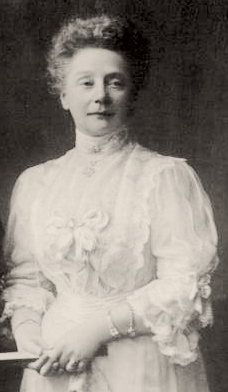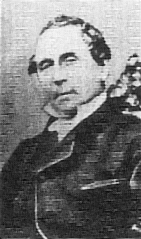
Paul Ludwig Philipp Wilhelm Tischbein (12 July 1820, Rostock - 17 May 1874, Rostock) was a German illustrator and painter; primarily of landscapes and genre scenes. He was a member of the Tischbein family of artists.

Paul Ludwig Philipp Wilhelm Tischbein (12 July 1820, Rostock - 17 May 1874, Rostock) was a German illustrator and painter; primarily of landscapes and genre scenes. He was a member of the Tischbein family of artists.
His father was the painter, August Albrecht Christian Tischbein. His brother, Albrecht was an engineer and shipbuilder.
In 1848, he began his formal studies at the Berlin University of the Arts and continued at the Dresden Academy of Fine Arts. After graduating, he became an art teacher. From 1861 to 1869, he taught at the "Große Stadtschule", a gymnasium devoted to the humanities in Rostock.
In addition to his paintings, he created lithographs of people in military uniforms and traditional folk costumes. In the 1870s, he produced illustrations for several works by the Low-German comic writer, John Brinckman.

Mecklenburg-Vorpommern, also known by its anglicized name Mecklenburg–Western Pomerania, is a state in the north-east of Germany. Of the country's sixteen states, Mecklenburg-Vorpommern ranks 14th in population; it covers an area of 23,213 km2 (8,963 sq mi), making it the sixth largest German state in area; and it is 16th in population density. Schwerin is the state capital and Rostock is the largest city. Other major cities include Neubrandenburg, Stralsund, Greifswald, Wismar, and Güstrow. It was named after the 2 regions of Mecklenburg and Vorpommern.

Sternberg is a town in the Ludwigslust-Parchim district of the state of Mecklenburg-Vorpommern.
Paul Falkenberg was a German botanist. He was a professor of botany and Director of Botanical Garden Rostock. He was known for his works in anatomy and morphology of plants, and on the algae. Falkenberg dedicated much on the study to the most extensive and most difficult group red algae Rhodomelaceae.

Princess Elisabeth Sybille of Saxe-Weimar-Eisenach was the first wife of Duke Johann Albrecht of Mecklenburg, Regent of Mecklenburg-Schwerin and of the Duchy of Brunswick.
David Köler, also Koler, Colerus was a German composer.
Heinrich Pommerencke (1821–1873) was a successful portrait painter of Mecklenburg-Schwerin.

Franz Wilhelm Johann Bunke was a German landscape painter.

Otto Piper (1841–1921) was a German architectural historian who, with August von Cohausen (1812–1896), is regarded as one of the two founders of scientific research into castles.

August Albrecht Christian Tischbein was a German painter and lithographer from the Tischbein family of artists.

Johann Heinrich Albrecht Tischbein was a German engineer and shipbuilder; one of the designers of the first German iron screw steamers.

Karl Lorenz Rettich was a German landscape artist and draftsman.
Paul Wallat was a German landscape artist, draftsman and sculptor.

Adolf Friedrich Wilhelm Wachenhusen was a German landscape artist, draftsman and etcher. The focus of his work was on the countryside of his home region, Mecklenburg.

Anna Louise Adolphine Eduardine Gerresheim was a German landscape artist, portrait painter and etcher. She was among the founders of the artist's colony in Ahrenshoop on the Baltic Sea.

Käthe Frida Rosa Loewenthal was a German Modernist landscape painter of Jewish ancestry. She was murdered in the Shoah. The Painter Susanne Ritscher was her sister.
Werner Ladwig was a German conductor.

Dorothea "Dörte" Helm, also Dörte Helm-Heise was a German Bauhaus artist, painter and graphic designer.

Jacob Eduard Mantius was a German operatic tenor, composer and voice teacher.

Wilhelmine Suhrlandt, née Skoglund was a German lithographer.

Carl Suhrlandt was a German painter. All of his works feature animals; mostly horses.